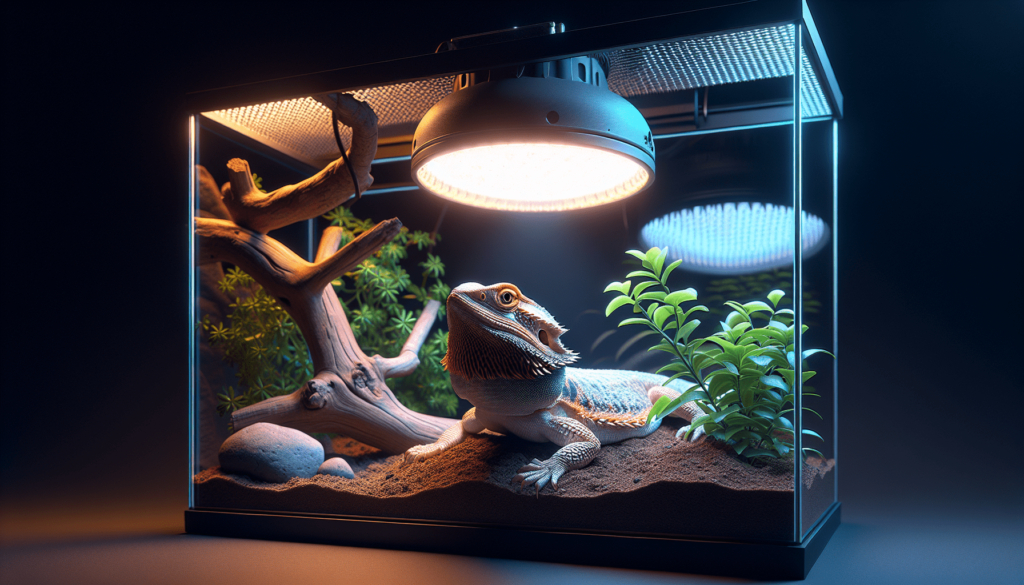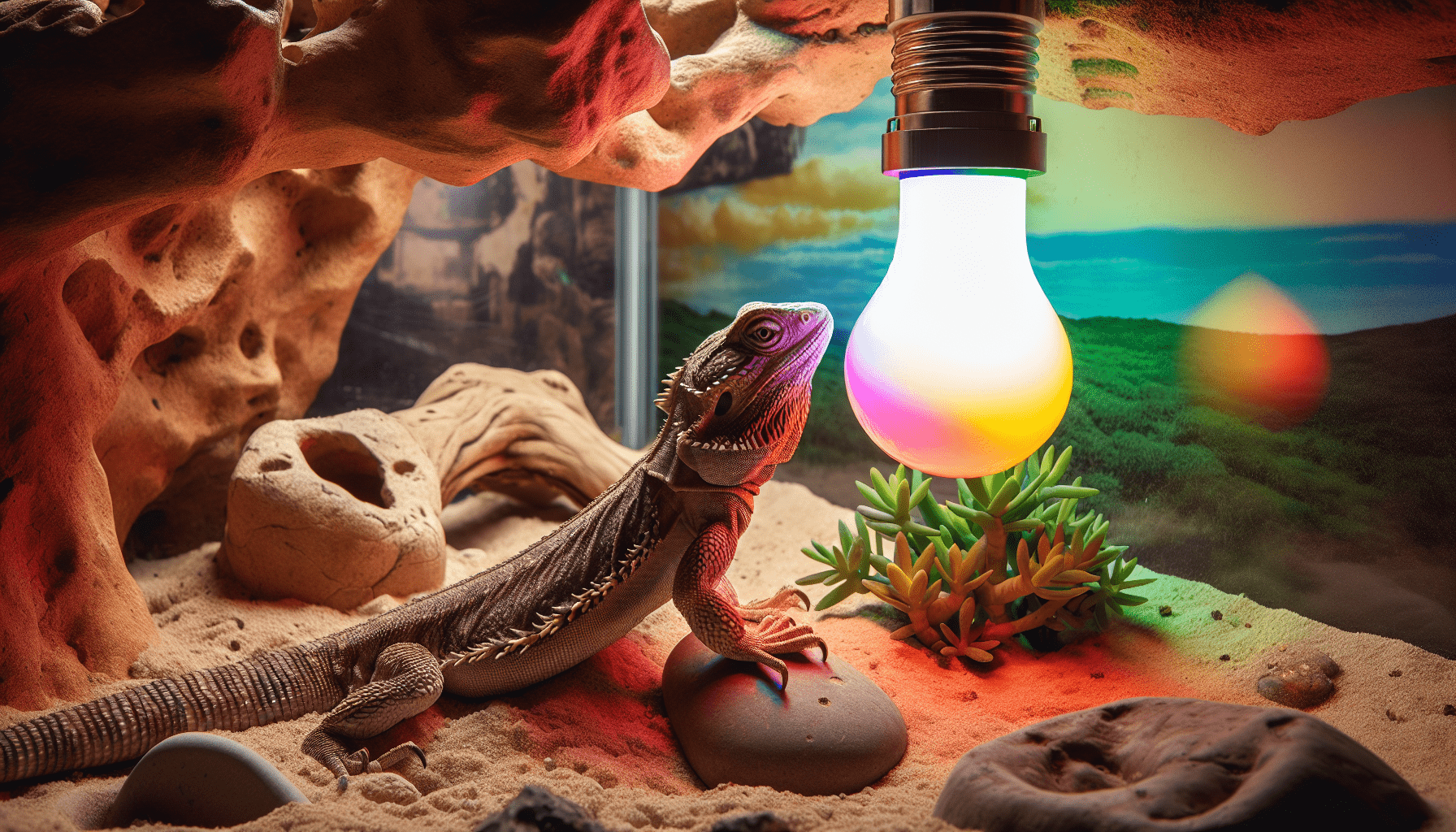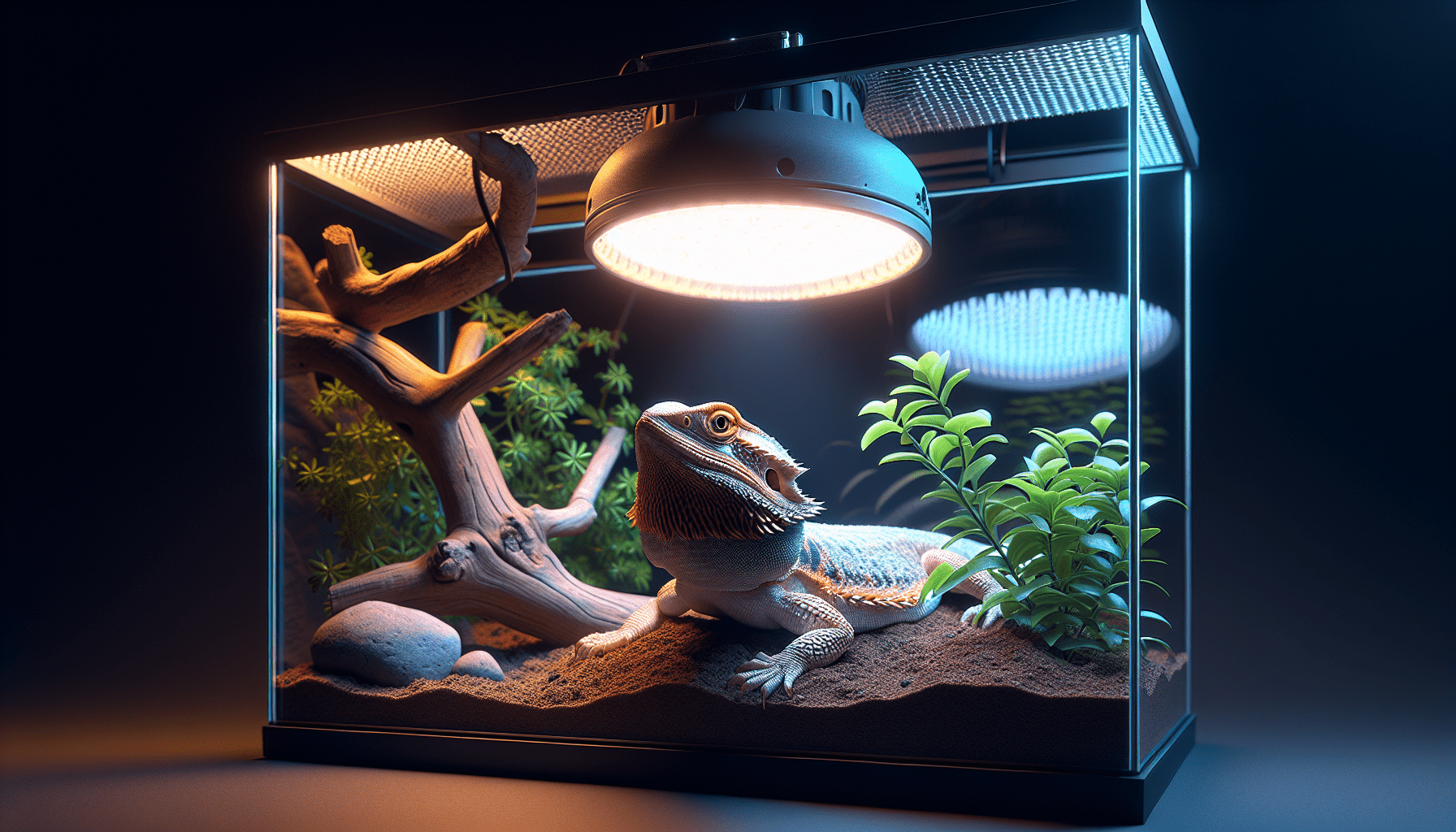
What Color Light Is Best For Reptiles?
Are you a reptile owner looking to provide optimal lighting for your scaly friend? Choosing the right color light can have a significant impact on your reptile’s well-being. In this article, we will explore the various options and help you understand which color light is best suited for your reptile’s specific needs. Whether you have a bearded dragon, a leopard gecko, or a turtle, read on to find out which color light will provide the perfect environment for your cold-blooded companion.
Effects of Light on Reptiles
Light plays a crucial role in the overall health and well-being of reptiles. It affects their behavior, metabolism, reproduction, and overall physiological functions. It is essential to provide reptiles with the right type and intensity of light to mimic their natural habitat and fulfill their specific lighting requirements. Understanding the effects of light on reptiles can help us create appropriate lighting setups for their enclosures.
Visible Spectrum
The visible spectrum of light refers to the colors that humans can perceive. While reptiles see colors differently than we do, providing them with a variety of colors can still have beneficial effects. The visible spectrum includes red, orange, yellow, green, blue, indigo, and violet. Different colors may stimulate different behaviors in reptiles, so offering a range of colors can enhance their natural behaviors, such as basking, feeding, and mating.
Ultraviolet Spectrum
In addition to the visible spectrum, reptiles also require exposure to ultraviolet (UV) light, which is divided into UV-A, UV-B, and UV-C categories. UV-B radiation is particularly important for reptiles, as it enables the synthesis of vitamin D3 in their skin. Vitamin D3 is crucial for calcium metabolism and proper bone development. Without adequate UV-B exposure, reptiles may suffer from metabolic bone disease, weakened immune systems, and reduced lifespan.
Natural Lighting for Reptiles
Simulating natural light conditions in reptile enclosures is essential for their physical and psychological well-being. By replicating the lighting conditions they would experience in the wild, we can help reptiles maintain their natural behaviors and biological functions.
Importance of Simulating Natural Light
Reptiles are diurnal or crepuscular creatures, meaning they are most active during the day or dawn/dusk periods, respectively. Providing them with appropriate natural lighting can help regulate their circadian rhythm and ensure they engage in their natural behaviors, such as basking, exploring, hunting, and resting.
Sunlight and UVB Radiation
The best source of natural light for reptiles is sunlight. Sunlight provides a full spectrum of light, including the necessary UV-B radiation. However, it is essential to screen the enclosure to filter out harmful UV-C radiation and prevent overheating. If natural sunlight is not readily available or feasible, artificial lighting options that simulate natural sunlight can be used as a substitute.

What Color Light Is Best For Reptiles?
Different Light Colors for Reptiles
In addition to natural light, reptiles can benefit from exposure to specific colors of light. While research on the effects of different light colors on reptiles is limited, anecdotal evidence and observations suggest that certain colors can influence their behavior and physiological processes.
White Light
White light replicates the broad spectrum of sunlight and provides a balanced blend of colors. It is ideal for both diurnal and crepuscular reptiles, as it allows them to exhibit their natural behaviors without altering their perception of colors. White light is commonly used in reptile enclosures as a general light source.
Red Light
Red light has a longer wavelength and lower energy compared to other colors. It is often used as a nighttime light source for reptiles, as it has minimal impact on their sleep patterns and does not disrupt their natural cycles. Red light also provides a dim and calming environment, making it suitable for nocturnal reptiles or those that are more sensitive to bright lights.
Blue Light
Blue light has a shorter wavelength and higher energy compared to red light. It can enhance the visual appeal of reptile habitats and highlight the natural colors of certain species. Blue light is often used in conjunction with other colors to create a more visually appealing enclosure. However, it is important to use blue light sparingly as prolonged exposure can disrupt reptiles’ sleep patterns.
Green Light
Green light falls midway between blue and red light in terms of wavelength and energy. It can provide a natural and soothing environment for reptiles, particularly those from forested habitats. Green light is believed to enhance the visibility of plants and mimic the lighting conditions found in their natural ecosystems. It can be used as a supplemental light source to create a more varied and realistic lighting setup.
White Light for Reptiles
Pros of white light:
- Provides a broad spectrum of colors, mimicking natural sunlight.
- Supports both diurnal and crepuscular reptiles in displaying their natural behaviors.
- Helps reptiles accurately perceive colors and environments.
Cons of white light:
- May not provide the necessary UV-B radiation for reptiles requiring high UV exposure.
- Can be too bright for nocturnal or light-sensitive reptiles, causing stress or disruption of natural sleep patterns.

Red Light for Reptiles
Pros of red light:
- Does not disturb reptiles’ sleep patterns and natural cycles.
- Provides a dim and calming environment suitable for nocturnal reptiles.
- Allows for nighttime observation without disturbing reptiles.
Cons of red light:
- Does not offer a broad spectrum of colors, potentially affecting reptiles’ perception of their environment.
- May not be ideal for diurnal reptiles that rely on color cues for their natural behaviors.
Blue Light for Reptiles
Pros of blue light:
- Enhances the visual appeal of reptile habitats.
- Highlights the natural colors and patterns of certain reptile species.
- Creates a pleasing and stimulating environment for reptiles and their owners.
Cons of blue light:
- Should be used sparingly, as prolonged exposure can disrupt reptiles’ sleep patterns.
- Limited research on the long-term effects of blue light on reptiles.
Green Light for Reptiles
Pros of green light:
- Mimics the lighting conditions found in forested habitats.
- Enhances the visibility of plants and stimulates natural behaviors.
- Provides a soothing and natural environment for reptiles.
Cons of green light:
- Limited research on the specific effects of green light on reptiles.
- Should be used as a supplemental light source rather than the primary source in reptile enclosures.
Choosing the Right Light for Your Reptile
When selecting a light source for your reptile, consider the following factors:
Consider the Reptile Species
Different reptile species have unique lighting requirements based on their natural habitats and behaviors. Research the specific lighting needs of your reptile species to ensure you provide the most suitable lighting conditions for their well-being.
Evaluate the Lighting Needs
Consider whether your reptile requires high UV-B exposure or if they are more nocturnal or diurnal in nature. Assessing their activity patterns and natural behaviors can help determine the appropriate intensity and duration of light exposure.
Consult with an Expert
If you are unsure about the lighting requirements of your reptile or how to set up an optimal lighting system, consult with a reptile veterinarian or an experienced reptile keeper. They can provide valuable insights based on their expertise and ensure you create a safe and appropriate lighting setup for your reptile.
Lighting Setups for Different Reptile Habitats
Reptiles come from diverse habitats, and replicating their natural lighting conditions is crucial for their overall well-being. Here are some general guidelines for creating lighting setups for different types of reptile habitats:
Desert Habitats
Desert-dwelling reptiles require intense sunlight and high UV-B exposure. Providing a basking area with a UV-B emitting light source is essential for their thermoregulation and vitamin D3 synthesis. Additionally, offering shaded areas and hiding spots will allow reptiles to retreat from the direct sun when they need to cool down.
Forest Habitats
Reptiles from forested habitats typically require lower light intensities compared to desert species. They thrive in diffused lighting with plenty of shade and areas with lower UV-B exposure. Using a combination of white, green, and red lights can help replicate the dappled lighting found in forest environments.
Aquatic Habitats
For reptiles inhabiting aquatic environments, such as turtles, specialized lighting setups are necessary. They require both a basking area with access to UV-B light for vitamin D3 synthesis and a full-spectrum underwater light to promote natural swimming and foraging behaviors. It is crucial to choose waterproof light fixtures and ensure proper heat and UV-B distribution within the enclosure.
Common Mistakes in Reptile Lighting
Inadequate or improper lighting can have detrimental effects on reptiles’ health and well-being. Here are two common mistakes to avoid when it comes to reptile lighting:
Insufficient UVB Exposure
Many reptiles require a significant amount of UV-B exposure to maintain proper calcium metabolism and overall health. Inadequate UV-B exposure can lead to metabolic bone disease, which can cause deformities, fractures, and even death in reptiles. Make sure to provide UV-B lights specifically designed for reptile use and position them correctly within the enclosure to ensure adequate exposure.
Excessive Light Intensity
While proper lighting is essential, excessive light intensity can be harmful to reptiles, especially if they are light-sensitive or nocturnal. Bright lights can cause stress, disrupt natural sleep patterns, and impact reptiles’ overall well-being. Consider providing shaded areas or using dimmer switches to adjust the lighting levels and prevent excessive intensity.
In conclusion, light plays a vital role in the lives of reptiles, affecting their behavior, physiology, and overall health. By providing appropriate lighting setups that simulate their natural habitat, we can help reptiles thrive in captivity. From the visible spectrum to the crucial UV-B radiation, understanding the effects of different light colors and intensities can guide us in selecting the right lighting for our reptile companions. Remember to consider the specific needs of your reptile species, evaluate their lighting requirements, and seek guidance from experts to ensure you create a safe and optimal lighting environment for your reptile’s well-being.










